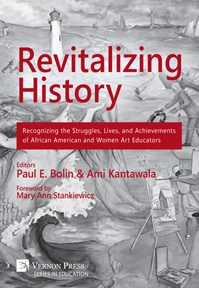Women and Arts: A winding path
Living in the 21st century, one could think things are very different today than say a couple of centuries ago. Although certainly some things have changed, when it comes to the role of women in society, change comes slowly. The raw truth is: it still takes the lead of white men to open doors. Some time later, and very carefully, others might be able to cross the threshold that they left half-open.
For a long time, and in our days, talented women, have found it hard to come out from the shadows, to overcome their role as wives, muses or models and to occupy the real place corresponding to them and shine on their own merit. Throughout modern history female artists had been considered and tagged as “feminists’’ if they were too strong, if their voice was too loud. Such is the case of American intellectual and writer Susan Sontag, recipient of the Prince of Asturias Award, often tagged as being too opined or the extraordinary Spanish essayist and philosopher Maria Zambrano, awarded with the Cervantes Price in 1988, who devoted her life claiming for women to be not superior or similar to men, but complementary.
Nowadays, the story is slowly evolving towards a more unbiased perspective when speaking about “artist” as a person, without being affected by gender, skin color or religion. As revealed by the Worldwide Women Atlas, created by the French Institute for Demographic Studies (INED), each country still has, however, its own story and contradictions. Factors such as poverty, religion or the economic crisis, do not help to advance the cause of gender equality.
Despite the challenges, many wise and gifted women have graced us with their legacy. We can recount marvelous works performed by artists that more than art pieces are the sign that, even if slowly, we are walking on the right path.
Succeeding against multiple forms of prejudice, the architect and designer, Zaha Hadid (Bagdad, 1950- Miami, 2016) marked an architectural revolution, pushing the frontiers of architecture and transforming buildings and landscapes. She always addressed the gender question from a very direct perspective: “I will never be one of them. I don’t sail, I am muslim and I am a woman’’. Living through and overcoming several injustices during her career, she left us jewels such as the Aquatics Center for the London 2012 Olympics, the Evelyn Grace Academy in Brixton or the Guangzhou Opera House and the Brige Pavilion in Zaragoza. As a maybe bigger personal achievement, she also opened the path for other Arab women to study architecture.
A different kind of injustice, in an almost repeated fashion, was the one lived by the painters, Judith Jans Leyster during the 17th century, and four centuries later by Margaret Keane, when their respective husbands attributed the authorships of their paintings to themselves. The story of Margaret Keane (1927, Nashville) has become famous after being depicted in the film ‘’Big Eyes’' (2014) by Tim Burton. Her paintings are striking because of characters with large, looming eyes. Some time after her second husband started selling her paintings, she realized he was taking credit for them. At some point, he even locked up Margaret in a studio with nothing to do but paint. Finally, she revealed all, and only after a defamation suit against him and the corresponding trial, was she finally recognized for her true talent.
Many are the stories of talented women, artists who remain forgotten just for being women. The writer Ángeles Caso has just published a book titled “The forgotten. A story of creative women“, after a long investigation revealing the work and life of wonderful painters, writers, musicians… and the microbiologist Nathalia Holt recounts the role women scientists played on space discoveries in her book “The Rise of the Rocket Girls: The Women who propelled us, from missiles to the Moon to Mars“. With a focus on African American art educators and women art educators, P. Bolin and A. Kantawala are editing the upcoming Vernon Press book "Revitalizing History: Recognizing the Struggles, Lives, and Achievements of African American and Women Art Educators".
Stories from women such as these should be studied in schools and remembered by all of us, as their lives shaped so much of what we take today for granted.
Page last updated on April 20th 2016. All information correct at the time, but subject to change.


